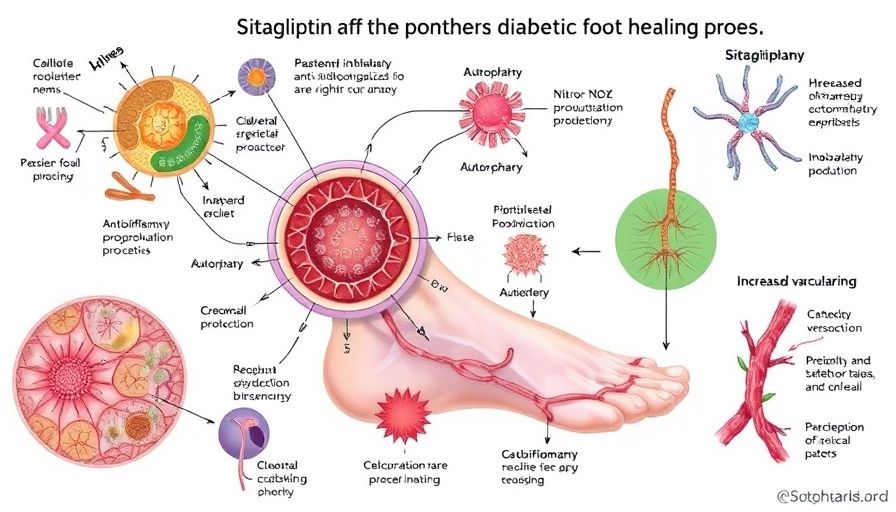
How Sitagliptin Can Aid DFU Healing Regardless of Blood Sugar Levels
Recent research highlights the potential of sitagliptin, a medication typically used for managing diabetes, in promoting the healing of diabetic foot ulcers (DFUs) without necessarily controlling glucose levels. This groundbreaking finding signifies a shift in how we approach treatment for a condition affecting millions worldwide, underpinning the need for innovative therapies in the realm of diabetic care.
The Mechanism Behind Sitagliptin’s Healing Effects
Sitagliptin belongs to a class of drugs known as DPP-4 inhibitors. By enhancing incretin levels, it facilitates insulin production while reducing glucagon secretion, but its role extends beyond mere glycemic control. Researchers are uncovering that sitagliptin enhances wound healing through anti-inflammatory pathways and cellular proliferation—all crucial components for effective DFU recovery. These factors are particularly significant since chronic inflammation often hampers the natural healing process in diabetic patients.
Contextualizing DFUs in the Diabetes Landscape
Diabetic foot ulcers are prevalent and serious complications of diabetes, affecting about 15% of people with diabetes at some point in their lives. The management of DFUs can be complex due to factors such as neuropathy, poor circulation, and infection. This new insight into sitagliptin's usage offers new hope to patients who may see improved healing outcomes without the immediate need for tighter glucose control, fostering a more holistic approach to treatment.
Future Trends and Opportunities in Diabetes Management
The implications of this study suggest a potential paradigm shift in diabetes treatment strategies as healthcare providers consider sitagliptin not just for blood glucose management but also as an adjunct therapy to enhance DFU healing. Exploring multifaceted treatment plans that prioritize cellular health and tissue regeneration could revolutionize care for patients facing diabetic complications.
Counterarguments: Rethinking Diabetes Treatment Paradigms
While these findings are promising, some healthcare professionals who champion glucose control as the cornerstone of diabetes management might challenge the relevance of this research. Concerns center around the notion that emphasizing healing properties without robust glycemic control could lead to complacency in managing blood sugar levels, thus inviting other health complications. A comprehensive understanding of the implications of such treatments must involve a rigorous discussion that considers both sides of the argument.
Practical Advice for Patients and Healthcare Providers
Patients with diabetes struggling with DFUs should engage in open conversations with their healthcare providers about the potential inclusion of sitagliptin in their treatment regimens. Monitoring advancements in drug research and keeping abreast of new treatment protocols is vital. Healthcare providers should remain informed on the evolving landscape, embracing effective therapies that combine traditional glycemic control with innovative wound healing strategies.
Emotional Connections: Understanding Patient Perspectives
Living with diabetes and dealing with complications like DFUs not only affects physical health but emotional well-being too. Patients often experience feelings of frustration, anxiety, and hopelessness. Emphasizing treatment modalities that show tangible improvement in their condition, like sitagliptin’s effects on DFUs, can enhance patients’ outlook on their health journey, fostering a sense of empowerment and optimism.
As we learn more about the therapeutic properties of sitagliptin in promoting DFU healing, it’s imperative for both patients and providers to stay informed and collaboratively navigate treatment paths that prioritize both healing and comprehensive diabetes management.
 Add Row
Add Row  Add
Add 




Write A Comment